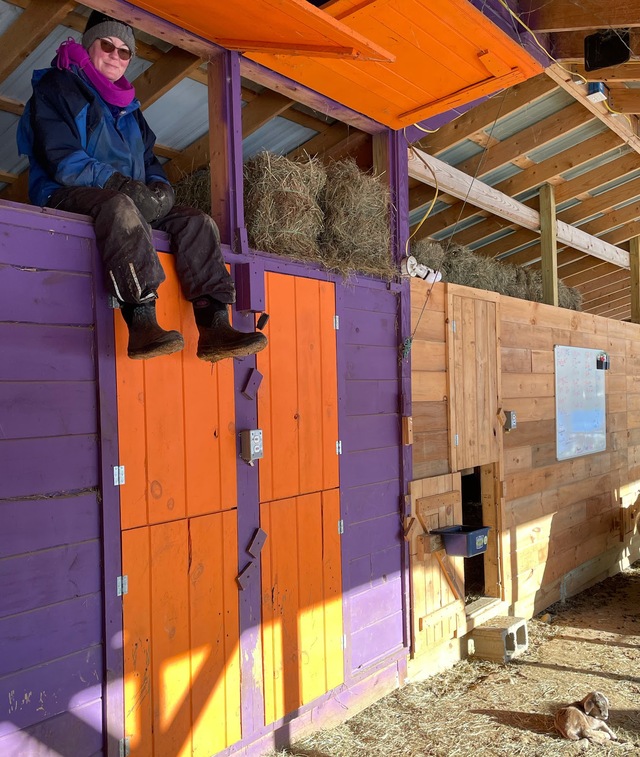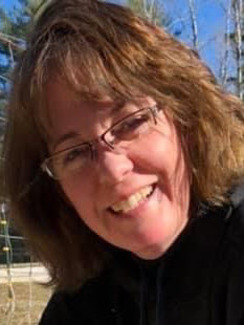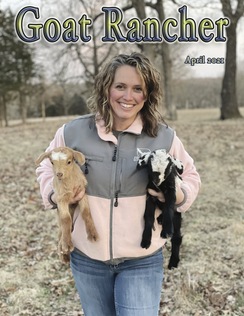Hay for Sale
Thursday, April 1, 2021
Many of you know from my past writings that a favourite Crise pastime before the all-consuming goat hobby started was going for drives around our beautiful home state of Maine. Once when the kids were little, on one of our many journeys (insert Dateline’s Keith Morrison’s voice), there was a sign...an oh-so foretelling sign.
“Hay For Sale” that sign read.
Josh at the wheel, kids strapped into booster seats, we were reading every sign we came upon as the budding readers in the back seat tackled everything! As the sign approached, I figured “hay” was an easy one, so I screamed out “HAY!” Insert dramatic pause and then quietly whispered “for sale”. Needless to say, the exclamation was an understatement as Josh immediately thought I was trying to warn him of impending doom! Thankfully the road was deserted as Josh, lost in his hypnotic state, swerved the new Ford back and forth! Josh’s heart flip-flopped out of his chest and back during the micro-eternity from when I yelled “hay” to whispering “for sale”. So began our love/hate relationship with hay. Even to this day, driving down the road, at the site of hay on a truck bound for hungry creatures, to the sign “hay for sale” beside the road, one of us is bound to yell “hay” and Josh will be jolted out of autopilot.
Looking back at the beginning, I had no idea what hay really was. I saw it in the fields every summer being baled or rolled, but that was the extent of my knowledge. Oh, and that I definitely didn’t want the job hay farmer on those hot summer days! As our first 5 goats arrived into their modest accommodations, the hay bales were few for those tiny creatures. They fit in the section of the barn that was created to hold hay between the 2 stalls that the young goats would spend their first full season in. That area has evolved over the years of refining our practice and Josh and Amelia have written about in past articles. It is now the work station, if you will, for the rest of the operation. We have shelves, hooks, barrels, buckets, scoops, minerals and even the USDA goat meat freezer in this area now! Everything is evolving, even the hay on the farm!
There is one single constant in this hay evolution and that is that the goats want their hay. Wintering in Maine means zero forage, except the occasional escape to Grandma Karen’s flower bed with the small pine trees that get picked clean each winter, so we must provide hay. That small workstation could hold around 30 square bales which lasted long enough for 5 little goats but soon expansion began, the herd started growing and our family dynamics were changing.
Once we expanded south (the directions the does’ barn runs) we added overhead storage for bales and more bales. To load these bales, the now old Ford would go to Elliot’s (the hay guy) barn and fit about 40 bales on. Return to base, all four of us at the ready and we could unload, ferry over, and lift to the top of the barn fairly quickly. Josh or Kevin would be on the ladder for stacking in the top and Amelia and I were truly the muscles doing the unloading and ferrying! Herd expansion meant barn expansion and now we can house around 200 bales in the top of the goat barn if we need to.
As the barn and goating evolved, our family dynamics were changing here too. Amelia was attending college but traveling from home so she was available most days to help in the barn. And then there was Kevin who was quickly growing up, reaching high school graduation and moving away to begin his career as a welder. The young muscle on the farm was moving away so we were always thinking about how to make things easier, how to make it less work, refining the process.
As our family was reaching the end of kids in high school, so were our hay guy’s kids. Elliot and Amy Banks’ youngest daughter Maggie was in Kevin’s graduating class. Kevin actually worked with the Banks family haying some fields around town when they needed an extra set of hands. Remember I said that the bales were stored in the hay guy’s barn? This is where Kevin’s muscles were really put to the test helping Maggie push the hay off the trailer to the top of the barn for Elliot to stack in the rafters.
And right there is where another step on the evolutionary chain occurred. Elliot began to consider moving to more round bales as a hay farmer because they are more tractor work than human intervention, he also began to talk to Josh about us changing over to round bales. With round bales on our farm, we would have less bale movement and less muscle per day needed. But how to feed out the round bales? Josh, our constant researcher decided on Ketchum feeders and ordered 2. Our first round bales were “served” in the center of the barnyard between the buck and doe pens. The Ketchums worked great.
As soon as spring arrived, weight restrictions were lifted on our road, and the gravel truck could transit our long uphill driveway, we began construction of a buck and a doe platform for the feeders to sit on. Here’s another progression in our hay story. Elliot began storing his round bales at another site, the once famous potato farm, Katahdin View Farm, in Lee, Maine. It only adds a couple of miles to our short drive to pick up 2 round bales at a time on the old Ford. The view, as suggested by the farm name, never gets old! Elliot and his pups have coffee at 2 o’clock nearly every afternoon with the current owner, so we can just shoot a quick text and pop on over around 2 when we need hay.
Remember the goal of reducing workload and human muscle-mass? With a few refinements of gates and fence lines, we can now back the Ford right up to the does’ platform where we roll the round bales off and push it into place. Amelia and Josh are much better at the pushing and pulling but Amelia and I can do it if need be. The buck pen side is a little trickier to get to so we back in as close as we can, roll it off the truck to the ground, then roll it 10 feet then tip it onto the platform. This side has less inhabitants so the rounds last a lot longer, so it’s okay that there is more manual labor involved. Also the investment in a little-bit bigger tractor this winter is sure to help minimize the human involvement as it gets put into service moving the round bales.
A bigger herd means more hay. Less humans means refining the process from field to consumption to make it more manageable for both the Banks Family Hay Farm and Marble Creek Acres.
(Josh and Kathy Crise, and their grown children, Amelia and Kevin, operate Marble Creek Acres in Lee, Maine. For interest in a future year’s Kiko waitlist, questions, or if you have topics you might like to read about in a future Goat Rancher, we can be reached at 207-619-3758, email [email protected] or marblecreekacres.com)
“Hay For Sale” that sign read.
Josh at the wheel, kids strapped into booster seats, we were reading every sign we came upon as the budding readers in the back seat tackled everything! As the sign approached, I figured “hay” was an easy one, so I screamed out “HAY!” Insert dramatic pause and then quietly whispered “for sale”. Needless to say, the exclamation was an understatement as Josh immediately thought I was trying to warn him of impending doom! Thankfully the road was deserted as Josh, lost in his hypnotic state, swerved the new Ford back and forth! Josh’s heart flip-flopped out of his chest and back during the micro-eternity from when I yelled “hay” to whispering “for sale”. So began our love/hate relationship with hay. Even to this day, driving down the road, at the site of hay on a truck bound for hungry creatures, to the sign “hay for sale” beside the road, one of us is bound to yell “hay” and Josh will be jolted out of autopilot.
Looking back at the beginning, I had no idea what hay really was. I saw it in the fields every summer being baled or rolled, but that was the extent of my knowledge. Oh, and that I definitely didn’t want the job hay farmer on those hot summer days! As our first 5 goats arrived into their modest accommodations, the hay bales were few for those tiny creatures. They fit in the section of the barn that was created to hold hay between the 2 stalls that the young goats would spend their first full season in. That area has evolved over the years of refining our practice and Josh and Amelia have written about in past articles. It is now the work station, if you will, for the rest of the operation. We have shelves, hooks, barrels, buckets, scoops, minerals and even the USDA goat meat freezer in this area now! Everything is evolving, even the hay on the farm!
There is one single constant in this hay evolution and that is that the goats want their hay. Wintering in Maine means zero forage, except the occasional escape to Grandma Karen’s flower bed with the small pine trees that get picked clean each winter, so we must provide hay. That small workstation could hold around 30 square bales which lasted long enough for 5 little goats but soon expansion began, the herd started growing and our family dynamics were changing.
Once we expanded south (the directions the does’ barn runs) we added overhead storage for bales and more bales. To load these bales, the now old Ford would go to Elliot’s (the hay guy) barn and fit about 40 bales on. Return to base, all four of us at the ready and we could unload, ferry over, and lift to the top of the barn fairly quickly. Josh or Kevin would be on the ladder for stacking in the top and Amelia and I were truly the muscles doing the unloading and ferrying! Herd expansion meant barn expansion and now we can house around 200 bales in the top of the goat barn if we need to.
As the barn and goating evolved, our family dynamics were changing here too. Amelia was attending college but traveling from home so she was available most days to help in the barn. And then there was Kevin who was quickly growing up, reaching high school graduation and moving away to begin his career as a welder. The young muscle on the farm was moving away so we were always thinking about how to make things easier, how to make it less work, refining the process.
As our family was reaching the end of kids in high school, so were our hay guy’s kids. Elliot and Amy Banks’ youngest daughter Maggie was in Kevin’s graduating class. Kevin actually worked with the Banks family haying some fields around town when they needed an extra set of hands. Remember I said that the bales were stored in the hay guy’s barn? This is where Kevin’s muscles were really put to the test helping Maggie push the hay off the trailer to the top of the barn for Elliot to stack in the rafters.
And right there is where another step on the evolutionary chain occurred. Elliot began to consider moving to more round bales as a hay farmer because they are more tractor work than human intervention, he also began to talk to Josh about us changing over to round bales. With round bales on our farm, we would have less bale movement and less muscle per day needed. But how to feed out the round bales? Josh, our constant researcher decided on Ketchum feeders and ordered 2. Our first round bales were “served” in the center of the barnyard between the buck and doe pens. The Ketchums worked great.
As soon as spring arrived, weight restrictions were lifted on our road, and the gravel truck could transit our long uphill driveway, we began construction of a buck and a doe platform for the feeders to sit on. Here’s another progression in our hay story. Elliot began storing his round bales at another site, the once famous potato farm, Katahdin View Farm, in Lee, Maine. It only adds a couple of miles to our short drive to pick up 2 round bales at a time on the old Ford. The view, as suggested by the farm name, never gets old! Elliot and his pups have coffee at 2 o’clock nearly every afternoon with the current owner, so we can just shoot a quick text and pop on over around 2 when we need hay.
Remember the goal of reducing workload and human muscle-mass? With a few refinements of gates and fence lines, we can now back the Ford right up to the does’ platform where we roll the round bales off and push it into place. Amelia and Josh are much better at the pushing and pulling but Amelia and I can do it if need be. The buck pen side is a little trickier to get to so we back in as close as we can, roll it off the truck to the ground, then roll it 10 feet then tip it onto the platform. This side has less inhabitants so the rounds last a lot longer, so it’s okay that there is more manual labor involved. Also the investment in a little-bit bigger tractor this winter is sure to help minimize the human involvement as it gets put into service moving the round bales.
A bigger herd means more hay. Less humans means refining the process from field to consumption to make it more manageable for both the Banks Family Hay Farm and Marble Creek Acres.
(Josh and Kathy Crise, and their grown children, Amelia and Kevin, operate Marble Creek Acres in Lee, Maine. For interest in a future year’s Kiko waitlist, questions, or if you have topics you might like to read about in a future Goat Rancher, we can be reached at 207-619-3758, email [email protected] or marblecreekacres.com)



